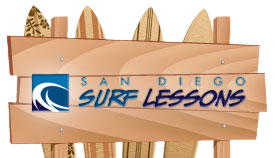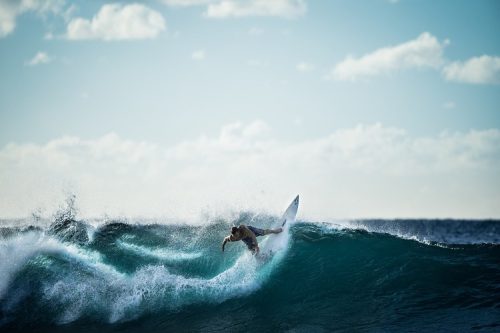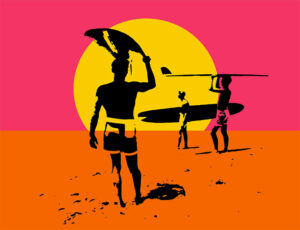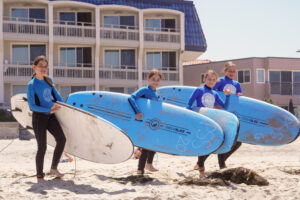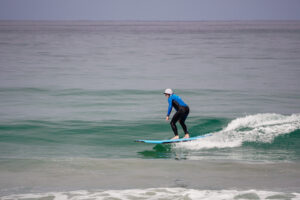Exploring the surf maneuvers is delving into a vast universe where beginners dream of their first steps on the waves and advanced surfers seek to refine their skills. Whether you’re an enthusiastic newcomer or a seasoned veteran craving challenges, understanding the key maneuvers of this sport is essential.
From the most basic movements to the most advanced techniques, the world of surfing maneuvers is rich in diversity and challenge. Grasping these maneuvers represents the first step towards, perhaps in the near future, being able to execute them.
The Main Surf Maneuvers
For those just starting their journey in the world of surfing, comprehending the main maneuvers is crucial to developing confidence and skill in the water. Even the simplest maneuvers, such as the bottom turn and the cutback, require practice and dedication to be executed with precision. Mastering these basic movements establishes a solid foundation, essential for progressing in the sport.
As surfers progress, they encounter more exciting and challenging maneuvers. The floater, for example, demands timing and skill to surf over the crest of the wave, defying gravity and pushing the surfer’s limits.
In addition to basic and advanced maneuvers, there are countless variations and combinations that allow surfers to express their creativity and personal style.
Below, the details of the main surfing maneuvers, providing a deeper understanding of each:
Cutback: Classic and Stylish surf maneuver
A maneuver involving a quick change of direction at the back of the wave, allowing the surfer to return to the wave’s crest or reposition for other maneuvers.
The Cutback is a classic and stylish maneuver that involves carving a smooth, arcing turn on the wave face. It is typically performed at the top or bottom of the wave, allowing the surfer to maintain speed and flow while changing direction. The key to a successful cutback is timing and technique, as well as reading the wave to anticipate the best moment to execute the maneuver.
Floater is among the high-performance surf maneuvers
Keeping the board over the wave’s crest, literally surfing on it, demands precise control and balance to prevent the board from sinking.
The Floater is a high-performance maneuver that involves riding the top of the wave, or “floating” across the section as it breaks. It requires precise timing and positioning to maintain speed and momentum while riding on the wave’s surface. The surfer must carefully read the wave to anticipate the best moment to execute the floater, as mistiming can result in getting caught in the lip or losing speed.
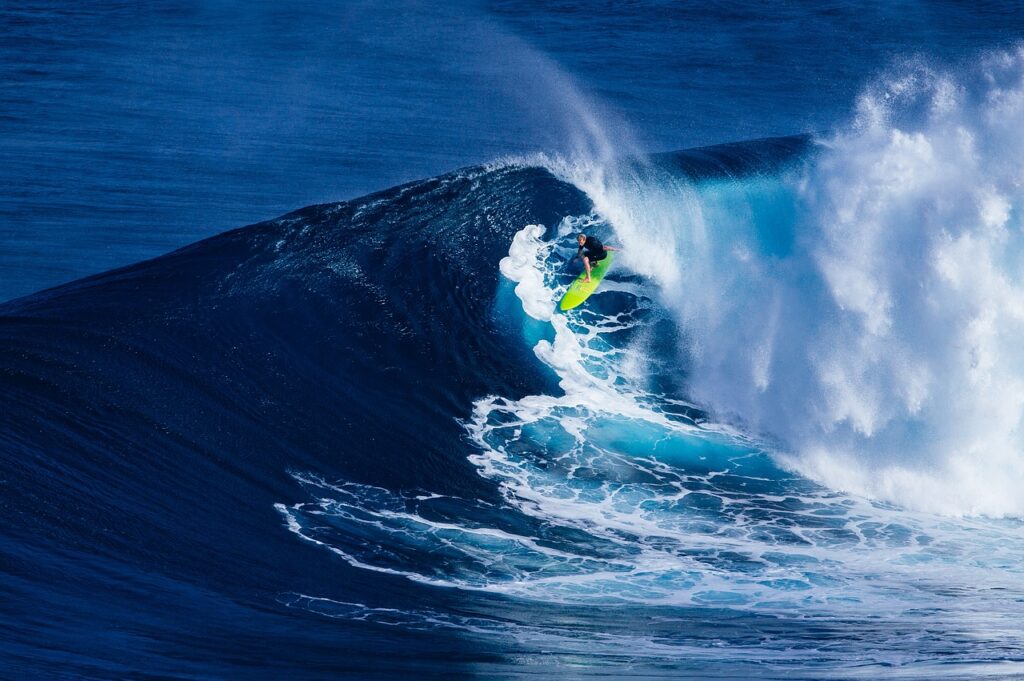
Tubo or the Barrel
Surfing within the hollow part of a breaking wave, known as the barrel, requires perfect timing and courage to enter and exit the tube.
The Tubo, also known as the barrel or tube ride, is one of the most sought-after experiences in surfing. It involves riding inside the hollow part of a breaking wave as it forms a tube or barrel shape. Successfully riding the tubo requires precise positioning and timing, as well as the ability to navigate the shifting dynamics of the wave as it barrels down the line. The sensation of being enveloped by the wave and emerging unscathed is an exhilarating experience that epitomizes the essence of surfing.
Aerial requires strength, speed and coordination
This maneuver involve the surfer launching off the wave face and performing aerial acrobatics, requiring strength coordination.
Aerial maneuvers, also known as airs, are some of the most dynamic and visually stunning maneuvers in surfing. They involve launching the board off the wave face and performing acrobatic maneuvers while airborne. A successful aerial requires a combination of speed, power, and technique, as well as the ability to read the wave and anticipate the best moment to launch. Surfers often use the lip of the wave as a ramp to propel themselves into the air, where they can perform spins, flips, and grabs before landing back on the wave face.
360 is a dynamic surf maneuver
Rotating the board 360 degrees, usually in the air or at the wave’s critical section, demands precise control and balance.
The 360 is a dynamic maneuver that involves rotating the board 360 degrees on the wave face or in the air. It is typically performed at the most critical section of the wave, where the surfer has the most speed and momentum. The surfer uses their body and weight to initiate the rotation, spinning the board around its axis and completing the full rotation before landing back on the wave face or in the water. The key to a successful 360 is precise control and balance, as well as timing the maneuver to coincide with the wave’s energy and movement. Surfers often use 360s to add flair and creativity to their riding, showcasing their technical skill and style.

Layback is among the timeless surf maneuvers
Leaning the body backward, with the back hand touching the water while sliding down the wave face, is a classic and stylish maneuver, usually performed on slower and smoother waves.
The Layback is a timeless maneuver that showcases style and finesse in surfing. It involves leaning the body backward while sliding down the face of the wave, with the back hand touching the water for stability and balance. The surfer uses their body and weight to initiate the layback, creating a stylish and graceful arc as they carve through the water. The key to a successful layback is timing and technique, as well as reading the wave to anticipate the best moment to execute the maneuver. Surfers often use laybacks to add flair and creativity to their riding, earning admiration from onlookers and fellow surfers alike.
Ready to start surfing or deepen your surfing skills? Join San Diego Surf Lessons, which offers specialized instructions for surfers of all levels, from beginners to advanced!
